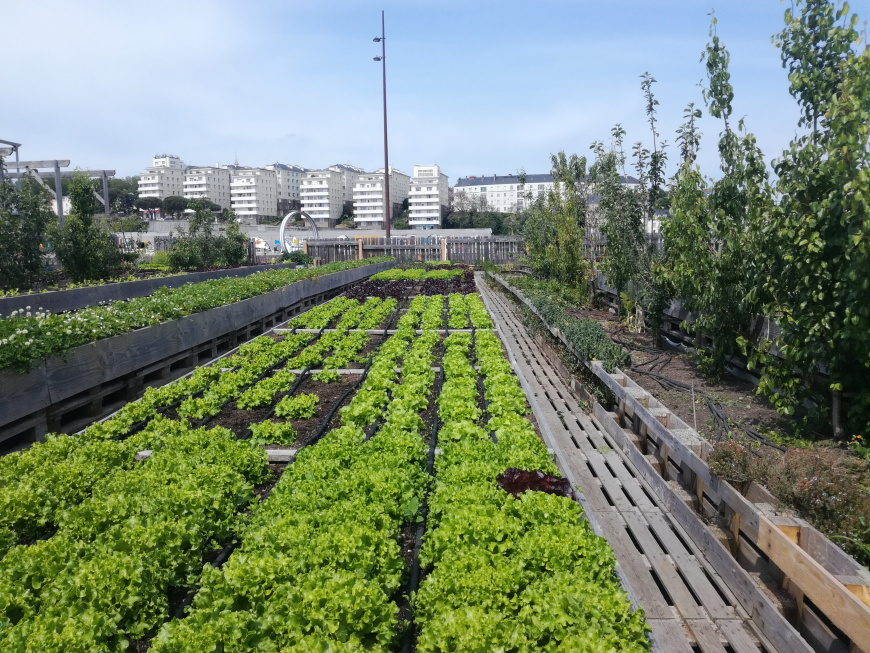The smart Trick of City Blooming That Nobody is Talking About
Wiki Article
City Blooming for Dummies
Table of ContentsThe Best Strategy To Use For City BloomingThe Facts About City Blooming UncoveredRumored Buzz on City BloomingLittle Known Questions About City Blooming.Some Known Details About City Blooming
Fascinated in growing food for sale in the City of Chicago? Below is a listing of regularly asked inquiries concerning the policies and regulations that cultivators must consider when planning a metropolitan farming task.
The zoning amendment does not customize any various other codes dealing with composting, building licenses, purchasing or renting City owned home, business licenses or ecological contamination. There are existing codes that control these concerns and they continue to be completely impact and might apply to your project. Community gardens are usually had or handled by public entities, civic companies or community-based companies and maintained by volunteers.
Urban farms expand food that is meant to be marketed, either on a nonprofit or for-profit basis. Because of their industrial function, urban ranches need an organization license. Yes. A neighborhood garden is enabled to sell excess generate that was grown on site if the sales are accessory or secondary to the garden's key function defined over.
7 Simple Techniques For City Blooming
Composting is enabled yet only for plant material that is created and made use of on site. The amount of compost product can not go beyond 25 cubic yards at any kind of provided time according to the criteria in 7-28-715 of the City's Municipal Code. Yes. Because the dirt at a lot of new yard sites requires changing, garden compost, soil, wood chips, or various other materials can be acquired to construct or boost the growing area - garden care.
If a building permit is called for after that the hoophouse will certainly be considered an accessory structure. You can learn even more concerning the structure license requirements by calling the Department of Buildings. The 25,000-square-foot dimension restriction is intended to avoid a solitary community yard from dominating an offered block or diminishing the block's existing domestic or industrial personality.
The limit does not put on gardens situated in Public Open Area (POS) areas. Can there be more than one community garden that is 25,000 square feet on a single block? Yes. The size limitation applies to individual yards, not to individual blocks. No. Fencing is not called for, however, yards that have big parking lot may be required to set up secure fencing or various other landscaping features.
All About City Blooming
B1 & B2 districts need that all commercial usage tasks be carried out inside your home. R districts limit business task. The laws reflect the function and intent of the Zoning Code. Is fence needed for city ranches? Yes. Fences may be required, along with landscape design and testing, for certain parking lot and outside work or storage space areas depending upon place and the particular activity happening.Urban ranches need structure licenses and zoning approvals prior to building and construction (balcony and patio garden design). Various other types of city testimonial might be called for depending on specific structures, activities, click for info dimension, landscape design, licensing, public heath and stormwater monitoring issues.
The Department of Service Matters and Customer Protection can help identify the details kind of business certificate that's called for. Off road car park is required for the majority of industrial projects in Chicago. The needed number of parking rooms is based on the number of employees working on website and not the square video of the expanding area.
Some Known Questions About City Blooming.

Yes. An urban ranch can sell garden compost product produced on site, however, the procedure must abide by the regulations in 7-28-715 of the Chicago Municipal Code. Yes. Aquaponic systems are enabled inside on urban ranches in numerous zoning districts. However, a zoning review and building permit is called for in order to install frameworks or systems and a company certificate is needed as defined over.
As much as 5 hives or swarms of honey may be maintained as an accessory usage. However, beekeepers need to sign up with the Illinois Division of Agriculture. For additional information regarding the recommended zoning modification you may speak to the Division of Housing and Economic Development, Bureau of Planning and Zoning at 312.744.8563.
, which takes place in rural areas at the side of suburbs.
Facts About City Blooming Revealed
It can include a movement of organic growers, "foodies" and "locavores", who seek to develop socials media started on a common principles of nature and community holism. These networks can create by means of formal institutional assistance, coming to be integrated right into local community planning as a "change town" movement for lasting urban growth.The more direct accessibility to fresh vegetable, fruit, and meat items that may be realised via city agriculture can improve food security and food safety and security while decreasing food miles, bring about lower greenhouse gas discharges, consequently adding to environment modification reduction. Some of the very first proof of city agriculture originates from Mesopotamia.
Report this wiki page